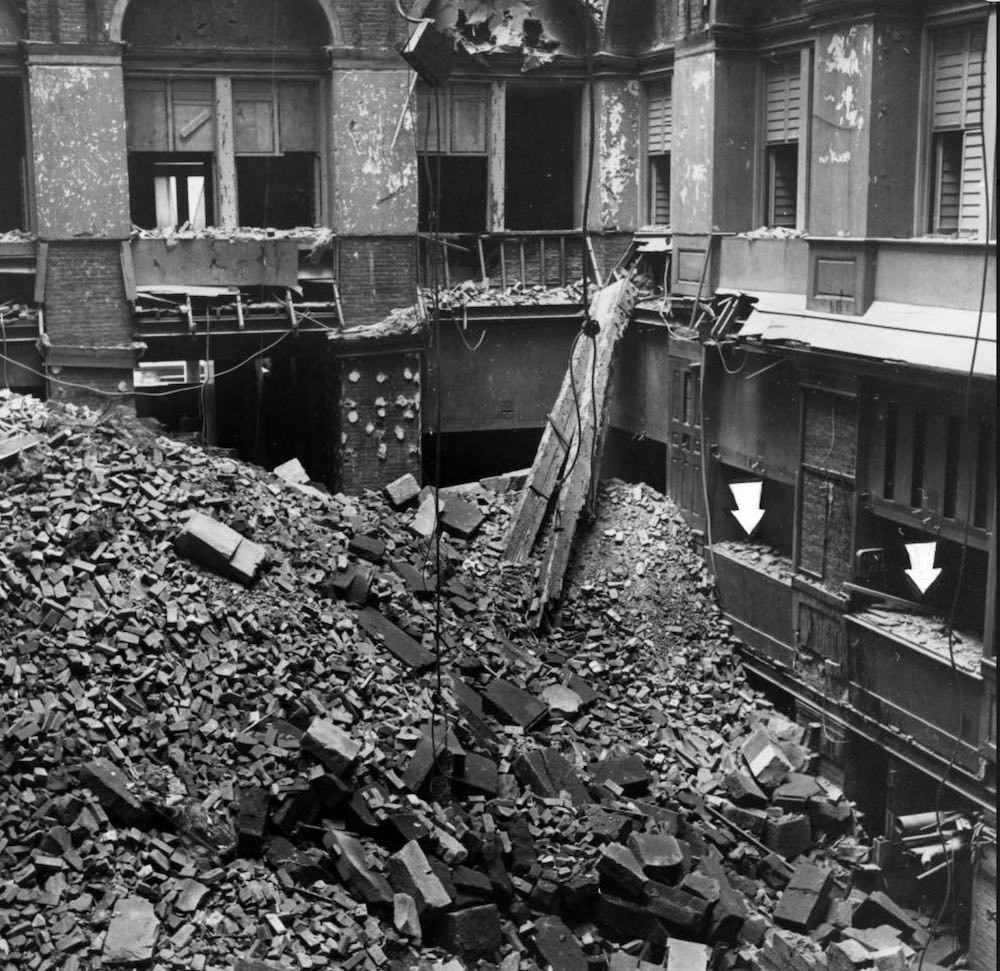Hollenden Hotel

Thousands of stories emanated from the venerable Hollenden Hotel. This hotel, located in downtown Cleveland on Superior, Bond, and Vincent Streets, was considered one of the city's most luxurious hotels. It attracted many diverse people, including several presidents of the United States, celebrities, and professional athletes, as well as prominent local organizations. As a luxury hotel, the Hollenden served many purposes; it was a place where local organizations hosted meetings, a place for politicians to host speeches and gatherings, and a place for the locals to grab a drink and socialize at one of its several bars. The hotel also featured local artists as entertainers regularly, contributing to the nightlife of downtown Cleveland.
When Liberty E. Holden opened the Hollenden Hotel in 1885, it quickly became an important part of the city. This massive building was designed by architect George F. Hammond and originally was eight stories tall, with 1,000 rooms and 100 private bathrooms. For its time, the Hollenden was a technological marvel with fireproof construction and electric lighting. The hotel had beautiful chandeliers illuminating the lobby and the hotel rooms were brightened by electric lamps throughout the hotel, which was sensational for its time. In addition, the hotel offered many amenities, such as a prestigious barbershop, a theater, a restaurant, and popular clubs.
The Hollenden Hotel was the home to one of the most magnificent barbershops in the city and in the world during this period. What made this barbershop unique was the telephones that it had at each of the barbershop chairs. This barbershop at the Hollenden Hotel was said to be the best in the country. Sought out by Liberty E. Holden himself, George Myers became the owner of the Hollenden Barbershop, regardless of his lack of financial stability. Myers learned the barber trade after being denied entrance into a college in Baltimore, Maryland. The barbershop was the place to be and a popular location to get a shave in downtown Cleveland. It not only enticed the local politicians, industrialists, and financiers of the city but appealed to eight presidents and cultural celebrities as well.
One of the most bizarre events that happened at the Hollenden Hotel received national recognition from the New York Times. In March of 1905, a lawyer of New York named Henry L. Woodward and Charles A. Brouse, who was a traveling salesman from Toledo, Ohio committed suicide by shooting themselves during the night. Woodward had been a guest at the hotel for a few weeks and was known for drinking heavily while in Cleveland. Woodward had left an un-mailed letter, while Brouse did not. This double suicide was extremely peculiar because these men did not know each other, yet they both killed themselves in the same manner during the night at the same hotel. There was no evidence presented to connect or link these two deaths. Interesting enough, the revolvers with which the deeds were done were of the same caliber.
In its prime, Cleveland was one of the largest cities in the United States as well as one of the wealthiest. It was a major industrial city and was home to the richest man known in American history, John D. Rockefeller, who initiated Standard Oil in Cleveland. Local, regional, and national organizations held conferences and events at the Hollenden. Political parties and leaders hosted speeches and dinners at the restaurants of the Hollenden. Its location on Superior, Bond and Vincent Streets in downtown Cleveland played a major role in the types of characters that were attracted to the Hollenden; from celebrities performing at the elegant Vogue Room to mobsters making deals in the suites of the hotel, the Hollenden Hotel offered a place for everyone.
After living gloriously and proudly through its first sixty years, the hotel had already begun to give up to the natural laws of physical desuetude; its financial position was declining because of the Great Depression and the hotel fell into the hands of a succession of hit-and-run operators who were completely lacking respect for the Hollenden’s traditions of class and without pride in its history. Unfortunately, the Hollenden Hotel could not be preserved. Former daily general columnist at Cleveland’s Plain Dealer, George E. Condon commented, “even in the rundown condition in which it found itself at the end, it was a magnificent building and it still enjoyed the loyalty, if not affection, of thousands of regular patrons who sentimentally insisted on the Hollenden address whenever they visited Cleveland.”
In 1963, the Hollenden Hotel was demolished and the Hollenden House, a new 14-story hotel with 400 rooms opened on March 1, 1965. Due to poor economic conditions throughout the 1980s in Cleveland, the Hollenden House closed its doors on May 1989. Shortly after it was demolished, developer John Galbreath purchased the land and the Fifth Third Center (formerly known as Bank One Center) was constructed by 1992.
Images












